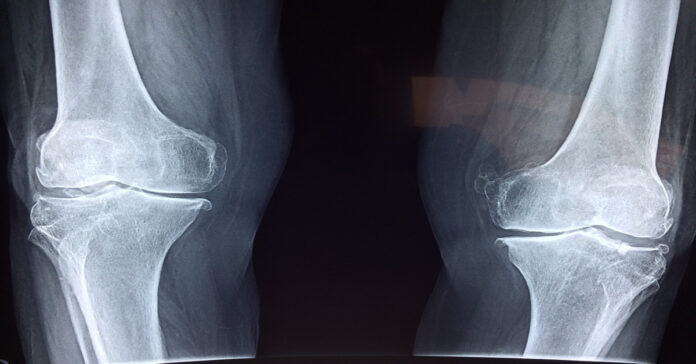Osteoarthritis is familiar to me. As the COVID-19 pandemic roiled across North America in 2020, my scheduled knee-replacement surgery was cancelled. After the first wave, and after being infected by the virus, it was several months before I could get to the operating room.
Before surgery, I had been dealing with osteoarthritis in both knees for almost two decades. My left knee was far worse than the right. I had been receiving cortisone injections regularly to keep me ambulatory. But in July 2020 I had a prosthetic joint implanted.
For years I had put off the surgery in the hope that a less invasive therapy using stem-cell-generated cartilage would become available. It is cartilage that provides cushioning to allow the knee joint to work without bone-on-bone contact. In osteoarthritis, the cartilage wears away until nothing is cushioning the immense stresses and loads that knees take on during daily activities.
As a surgeon explained to me, the reason stem-cell therapies to repair knees has yet to succeed isn’t that we cannot generate cartilage from stem cells, it is the collagen found in knee joints that cannot be restored or regrown. You may be familiar with collagen because of the many beauty supplements and treatments being sold on the market today. The collagen used for these isn’t the same as collagen found in knee joints. The complex collagen proteins in the knee are very different and play an important role in cartilage maintenance. Although we can generate chondrocytes (cartilage from stem cells), producing collagen suitable for knee therapies this way has yet to be done successfully.
So what research into non-surgical alternatives is being worked on today? An article entitled “Adhesive hydrogels in osteoarthritis: from design to application” appeared in the Springer Nature journal, Military Medical Research on January 30, 2023. It described research into developing hydrogels for osteoarthritic knee joint repair. Either natural or synthetic, the adhesive characteristics of hydrogels could be an answer.
Can Hydrogels Do The Work of Collagen?
As previously stated, hydrogels have great adhesive characteristics making them a good collagen substitute when attempting to regrow and restore cartilage in knee joints. The hydrogel material infiltrates the pores and irregularities found on tissue surfaces. This characteristic is called mechanical interlocking and it produces flat, slippery and firm surfaces. Injecting a layer of chondrocytes after hydrogels have bonded with the knee joint’s bone surfaces could become a potential non-surgical treatment. The problem, however, is that although the hydrogels bond to the bone, so far, getting the cartilage cells to do this has been another story.
A range of different adhesive hydrogels is being evaluated. The ideal is a hydrogel with double-sided adhesive characteristics to bond both bone and cartilage. Some are composed of contrasting structures. These are referred to as having double-network characteristics, elasticity on one side and stiffness on the other. Current research is looking at bacterially-engineered hydrogels coming from natural sources such as barnacles, mussels and sandcastle worms.
A material challenge for hydrogels will need to be tested when hardening. When used on knees they cannot be too brittle or too soft. The hydrogels have to stand up to the humid environment that characterizes our knees and bodies (we are mostly water). They have to respond to wear and tear caused by enormous stresses put on knee joints. And they have to be applied to the joint in the least invasive way possible. That’s a lot of issues still to be sorted.
The authors, in concluding their paper, summarize what future hydrogel-based treatments must provide:
- Material characteristics that make bone and cartilage bond and work under various biochemical and environmental conditions aimed at rigid integration and mechanical stability.
- Biological functionality equivalent to a healthy knee with performance and durability characteristics better than any knee prosthetic.
When I started my search for an alternative treatment for my osteoarthritis, it was more than a decade ago as I read and learned about stem cells, chondrocytes and collagen. And it likely will be another decade before non-surgical knee repairs using the techniques and materials described above become mainstream. The solution needs a multidisciplinary approach involving chemistry, biology, pharmaceuticals and significant clinical trials.









